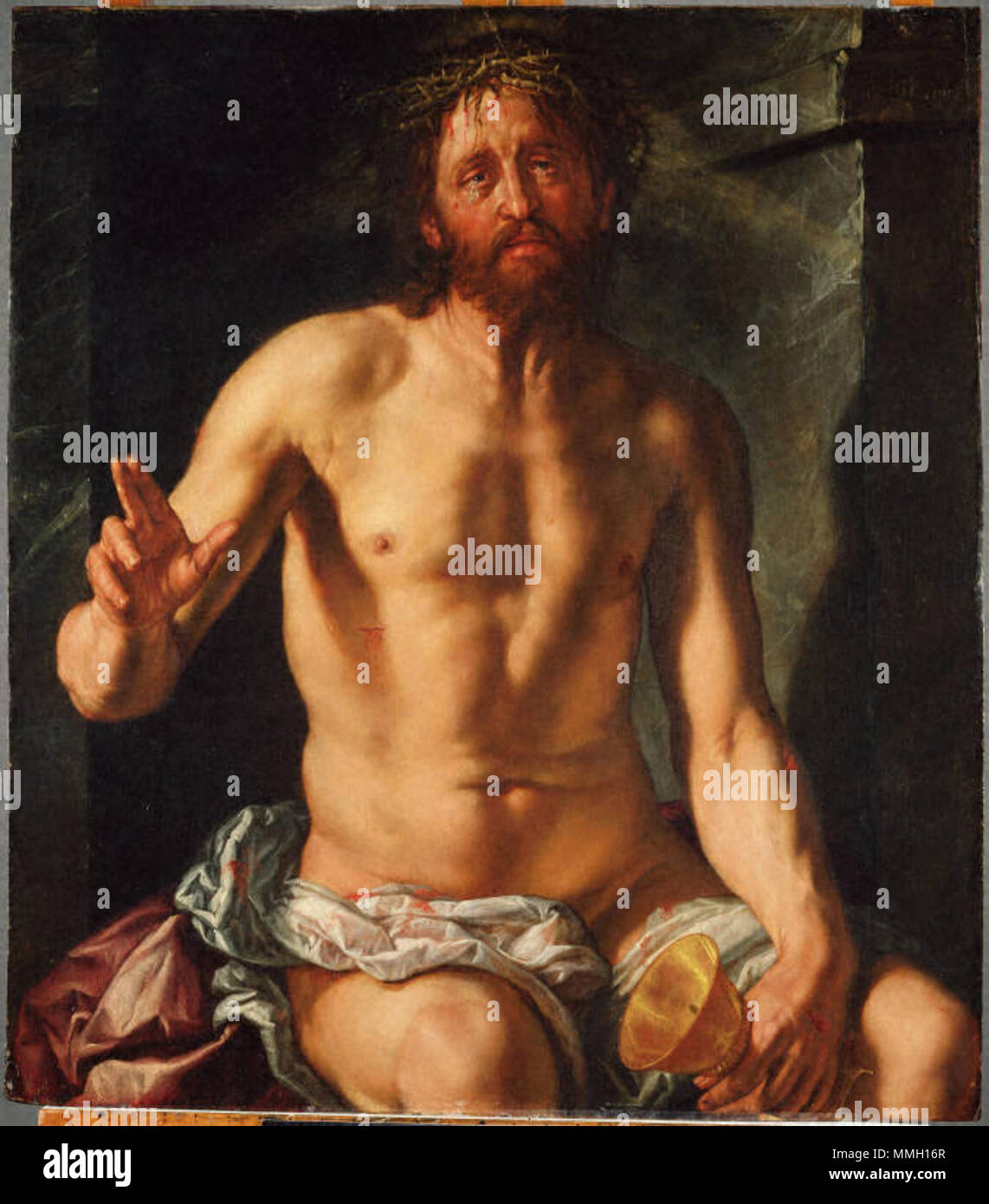. English: Catalogue Entry: A suffering Christ with a triangular nimbus and crown of thorns sits alone in a niche. His glowing flesh pulses with life and pain against the cold stone. Yet his body already bears the stigmata, the five wounds of the Crucifixion. Pierced and bleeding, his right hand is lifted in a sign of blessing. This is the Man of Sorrows, a mystical image for contemplation, rooted in late-medieval devotional practice, showing Christ simultaneously living and dead. The image draws upon many sources, including a relic — Veronica’s Veil (Christ’s face was miraculously imprinted

Image details
Contributor:
The Picture Art Collection / Alamy Stock PhotoImage ID:
MMH16RFile size:
14.3 MB (414.9 KB Compressed download)Releases:
Model - no | Property - noDo I need a release?Dimensions:
2096 x 2385 px | 35.5 x 40.4 cm | 14 x 15.9 inches | 150dpiMore information:
This image is a public domain image, which means either that copyright has expired in the image or the copyright holder has waived their copyright. Alamy charges you a fee for access to the high resolution copy of the image.
This image could have imperfections as it’s either historical or reportage.
. English: Catalogue Entry: A suffering Christ with a triangular nimbus and crown of thorns sits alone in a niche. His glowing flesh pulses with life and pain against the cold stone. Yet his body already bears the stigmata, the five wounds of the Crucifixion. Pierced and bleeding, his right hand is lifted in a sign of blessing. This is the Man of Sorrows, a mystical image for contemplation, rooted in late-medieval devotional practice, showing Christ simultaneously living and dead. The image draws upon many sources, including a relic — Veronica’s Veil (Christ’s face was miraculously imprinted on the saint’s veil as she wiped his brow on the road to Calvary) — and the legendary Mass of Saint Gregory (the Man of Sorrows appeared to the saint while he celebrated mass, and Christ’s wounds bled into the chalice to demonstrate the doctrine of transubstantiation). The realism of Christ’s living body emphasizes his human suffering, yet, as a body brought to life again after death, also conveys the hope that through his suffering, he offers eternal life to all. Goltzius, the preeminent Dutch engraver, began to paint late in life. Man of Sorrows with a Chalice echoes the work of his teacher, Maarten van Heemskerck (1498–1574), whose expressive muscular figures were informed by Michelangelo and Classical antiquity, sources that Goltzius himself saw during a trip to Italy in 1590–91. He also invigorates his Christ with new vitality based on studies of living models in the Haarlem academy. Gallery Label: Despite his renown as an engraver, Goltzius aspired to gain the regard and distinction reserved in his day only for painters of historical, mythological, and religious narratives. Here, the artist grounds his painting in the visual tradition of the Man of Sorrows. This type originated in the religious art of the late Middle Ages and presents the already crucified Christ in a state of animation distinct from the one he exhibits following the Resurrection